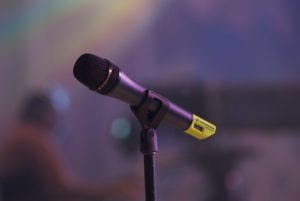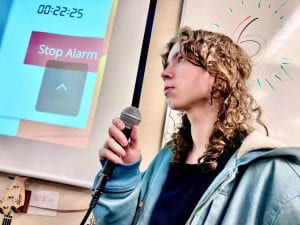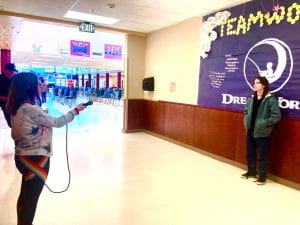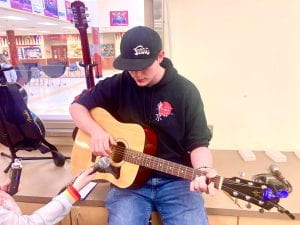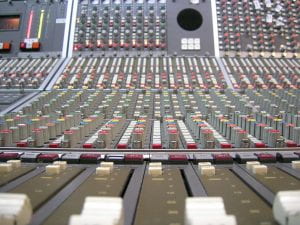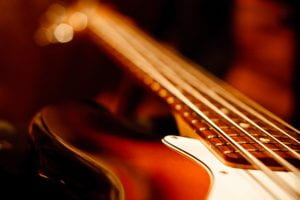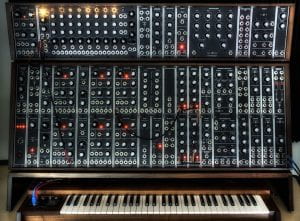
SUMMARY
Role
Composer / Engineer
Intention (SMART Goal) for the Session
By May 10, as part of TEAM 3, I will have evidence of a completed song following the theme by following this tutorial for Session 5.
PRE-PRODUCTION – INQUIRY
Leader(s) in the Field / Exemplary Work(s)
Primary Source
https://www.youtube.com/watch?v=s0CHxYBaROw
My primary source is a dungeon theme from The Legend of Zelda: Majora’s Mask. Based on the theme for this session, I was inspired by its industrial sound effects and eerie vibe.
0:05 – Metallic drumbeat
0:11 – Clanging sound effect, repeats every two measures
0:20 – 3-note descending arpeggio that fades in and out
0:38 – Different 5-note ascending arpeggio, overlayed atop the 3-note melody
1:10 – Chords
1:47 – Creepy synth
Secondary Source
My secondary source is a video analyzing my primary source – specifically, what causes it to come across as eerie.
6:19 – The clanging sound effect surprises the listener by appearing during the third measure of the drumbeat
6:45 – ^ Afterwards, it repeats every two measures to further throw off the listener’s expectations
7:04 – Weird percussive synth adds depth to the song’s rhythm
8:00 – The 3-note melody doesn’t fit perfectly into the song’s 4/4 time signature, muddying the perceived tempo
8:49 – ^ The 5-note melody does the same, also not fitting into a 4/4 measure, and sounds stranger when overlayed on the other melody
11:15 – The song’s melodies and chords function on a “whole-tone scale”, which is composed entirely of tritones that give an unsettling vibe
Training Source(s)
My training source is by a Youtuber who makes tutorials related to music theory, going over common weaknesses in composition and how to improve. This video focuses on making more interesting bass lines, something I struggle with when writing music.
1:41 – “Melodic contour”: the example bass line makes constant rapid jumps between octaves, rather than having a solid ascension/descension
2:00 – The bass never plays notes outside the main harmony, only roots and fifths
2:06 – “When the bass only plays notes that are in the accompanying chord, it blends into those chords because there’s nothing that makes it stand out from them.”
3:15 – “The third of each chord is what creates its major or minor emotion.”
4:20 – Non-diatonic can be used in a bass line if done carefully
5:01 – A melodic bass line and lead melody aren’t the exact same
Project Timeline
Pre-production Milestones
- Come up with a vibe
- Research chords
- Find sound effects
Production Milestones
- Have all of the parts completed
Post-production
- Mix it to a satisfying level
- Add sound effects
- Export & make adjustments
Proposed Budget
A budget will be completed during Session 5, 2024
PRODUCTION – ACTION
The (FILM, SOUND, or GAME Creation)
POST-PRODUCTION – REFLECTION
21st Century Skills
Ways of Thinking (Creativity, Innovation, Critical Thinking, Problem Solving)
I had to push myself a bit more to come up with something “chaotically cohesive,” conveying the mental deterioration of the main character without making it a complete noise mess. I think I did a pretty good job, and Deirdre agrees.
Ways of Working (Communication & Collaboration)
Deirdre and I collaborated on making the song – she came up with the story and foundation for the track, matching the theme, and I based my composition off of her suggestions and ideas. I also communicated my tech issues when necessary.
Tools for Working (Info & Media Literacy)
I used Online Sequencer like usual, but I messed with it a bit more by having the tempo constantly shift throughout the song; I’m honestly surprised it worked as well as it did. I also used Audacity to mix in sound effects. As a program I’m also pretty familiar with it, but it was my first time using it for that purpose.
Ways of Living in the World (Life & Career)
I think I got a bit better at collaborating with somebody. This is my first time doing it for a music project, and it was both fun and nerve-wracking to have someone regularly giving me feedback.
Reactions to the Final Version
Both advisory members enjoyed it and thought the theme was well conveyed and consistent. Bobby wished there was a stronger melody to break up the repetition, and Wanz thought the kick in the second verse should have been louder to keep the momentum going.
Self-Evaluation of Final Version
I think it was okay. The sound effects definitely helped, conveying the story and ideas better and filling the empty space, but I feel like the base song could have been more interesting. I did have fun messing it up and making it weird in the second “verse”, but I kept thinking about Connor suggesting a melody and struggled to come up with anything – maybe because the bass line was functioning more melodically, and I was worried another one would just get in its way.
Grammar and Spelling
Grammarly
